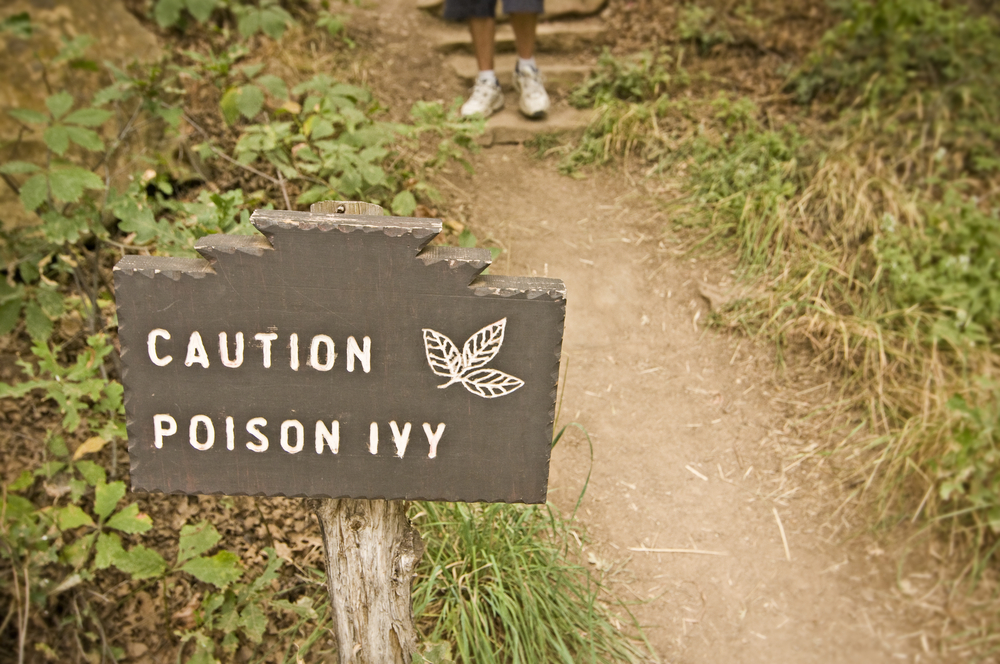Sensitivity to poison ivy is the most common allergy. Allergic reactions to poison ivy affect about 85% of people in the United States. Poison ivy is a plant that can be found in wooded areas across the United States. You are not born with a poison ivy allergy. You will not know if you are allergic to the plant until you have your first contact. If you have an allergic reaction to one of the poison plants, you are more likely to have a sensitivity to the other plants. Some people have noticed that their sensitivity to poison ivy, oak, and sumac tends to decline with age.
Urushiol is the oily sap that is found on poison ivy. Urushiol when it comes in contact with your skin causes a reaction. It is a form of contact dermatitis when a reaction occurs. Reactions can be mild to severe. Symptoms usually appear 24-72 hours after exposure. Scratching the rash does not cause it to spread. The rash is also not contagious so you cannot pass it onto other people, unless you have oils left on your skin.
There are three different ways you can get in contact with the oils.
- Direct contact from the plant onto your skin.
- Indirect contact touching something that has come in direct contact such as pets, gardening tools, sports equipment, or shoes.
- Airborne contact from burning the plants.
Urushiol can penetrate skin, eyes, nose, throat, and respiratory system.
Symptoms
Symptoms usually appear within 24 to 72 hours after exposure. Symptoms will look like red streaks or patches. May look like straight lines depending on how the plant brushed against your skin. You may experience itching, a rash, swelling, blisters, inflammation and a burning sensation.
Diagnosis
Usually you can self diagnose a poison ivy rash.
If you have a severe reaction you may want to go to the doctor to make sure you are treating it appropriately. Other reasons to go to the doctor could be if your rash is severe blistering, or swelling. If the affected areas are by the eyes, lips, throats, and genitals. If you experience a fever. If the rash is covering a majority of your body and lasts longer than 10 days, or if the blisters become infected you will want to talk with a doctor.
Diagnosing an allergic reaction to poison ivy usually will be diagnosed by a doctor from a physical exam and a medical and family history.
Treatment
There is no cure once you become in contact with the plant. You will have to let your body’s immune system run its course in fighting the rash.
- If you notice you have become in contact with the plant you will need to wash the area immediately with mild soap and lukewarm water.
- Wash all your clothes, shoes, socks, tools, pets and toys you might have come in contact with the oils.
- Cool compresses can be helpful during blistering phases.
- Calamine lotion for itching.
- Do not use lotions that have anesthetics or antihistamines; they may cause reactions on their own.
- Cool showers, baths with baking soda or oatmeal can also be soothing.
- If you are having a hard time sleeping at night you can take an over the counter oral antihistamine that may help you sleep.
Prevention
If you find that you are allergic to poison ivy, the best way to handle that allergy is avoidance. Avoid the plants. Learn what the plants look like so when you are out in the woods you know what you are looking for.
When you know you will be out in the woods wear long pants, and long sleeved shirts. After being outside, wash your clothes immediately. Do not touch pets that could have come in contact with the oils.
Make sure to wash your hands. Washing the oils off our skin will help stop spreading.
Sensitivity to poison plants affects about 85% of people. Though some people who are extremely allergic as children tend to grow out of their sensitivity as they get older. Some people may lose their sensitivities completely. Knowledge of what the plants look like so you can avoid them when in wooded areas is a great way to make sure you stay away. You will not know if you are sensitive to poison ivy though until you become in contact with it once. Urushiol is the oil that causes the contact dermatitis and is found in poison ivy, poison oak, and poison sumac.
Prepare your body for allergies by supporting your immune system: Allergy Reduction Pack
Scratching your poison ivy rash does not cause if to spread. 85% of us are allergic to poison ivy! #HealthSurgeon
Sources:
https://www.livescience.com/35712-heathy-geezer-poison-ivy.html
https://www.healthline.com/health/poison-ivy-immunity#shots
https://www.webmd.com/skin-problems-and-treatments/guide/understanding-poison-ivy-oak-sumac-basics
https://www.hopkinsmedicine.org/health/conditions-and-diseases/allergens-poison-ivy–poison-oak
https://www.mayoclinic.org/diseases-conditions/poison-ivy/symptoms-causes/syc-20376485









